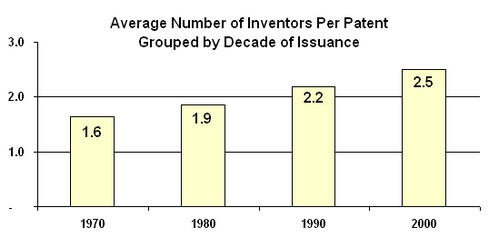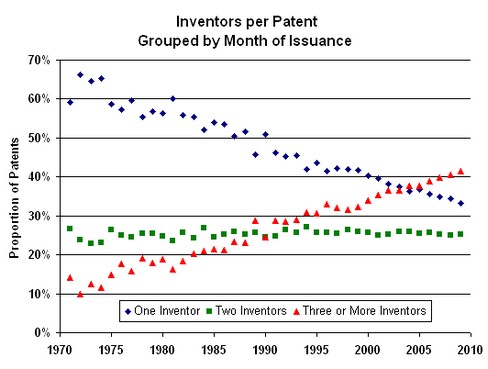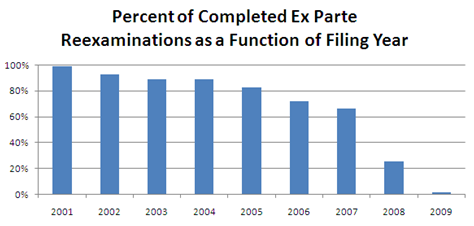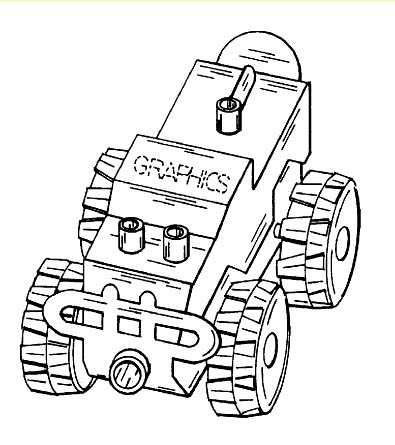Effect of a Pending Reexamination — Each claim of a patent is presumed valid under 35 U.S.C. 282 and may be enforced notwithstanding the presence of a pending reexamination proceeding. See Ethicon v. Quigg, 849 F.2d 1422, 1428, 7 USPQ2d 1152, 1157 (Fed. Cir. 1988); See also Viskase Corp. v. Am. Nat’l Can Co., 261 F.3d 1316, 1328, 59 USPQ2d 1823, 1831 (Fed. Cir. 2001); In re Etter, 756 F.2d 852, 857, 225 USPQ 1, 4 (Fed. Cir. 1985)(en banc). Although litigation may move forward in parallel with a reexamination proceeding, at the district court’s discretion, the results of the reexamination proceeding may have an effect on the litigation. See e.g., In re Translogic, 504 F.3d 1249 (Fed. Cir. 2007). Under 35 U.S.C. 307, a patent is not revised by any amendment or cancellation of a claim made during a reexamination proceeding until a reexamination certificate is issued.
Ex Parte Reexamination – A proceeding in which any person may request reexamination of a U.S. Patent based on one or more prior patents or printed publications. A requester who is not the patent owner (i.e., a “third party requester”) has only limited participation rights in the proceeding. [MPEP 2209]
Inter Partes Reexamination – A proceeding in which any person who is not the patent owner and is not otherwise estopped may request reexamination of a U.S. Patent issued from an original application filed on or after November 29, 1999 based on one or more prior patents or printed publications. Both patent owner and third party requester have participation rights throughout the proceeding, including appeal rights. [MPEP 2609]
Reexamination Granted – An Order Granting Reexamination is not a determination of claim patentability. An Order that one or more claims of a U.S. Patent will be reexamined because the request has established the existence of at least one SNQ based upon prior patents and/or printed publications. [MPEP 2247.01]
In ex parte reexamination, the Order, whether granting or denying reexamination, must be mailed within three months of the filing date of the request for reexamination. [MPEP 2241]
In inter partes reexamination, the Order must be mailed not later than three months after the request is filed. [MPEP 2641]
Reexamination Denied – An Order Denying Reexamination is also not a determination of claim patentability. An order denying reexamination of any of the claims of a U.S. Patent because the Office has determined that no SNQ has been established in the request for reexamination. [MPEP 2247.01]
Substantial New Question of Patentability (SNQ) – A request for reexamination must establish the existence of at least one new technological teaching affecting any claim of the patent for which reexamination has been requested that was not considered by the Office in a prior Office proceeding involving the patent. The SNQ is established based on prior patents and/or printed publications. [MPEP 2242]
Notice of Filing of Request for Reexamination – Notice that a request for reexamination has been filed and accorded a filing date is published in the Official Gazette. [MPEP 2215]
Rejection (Non-Final) – The initial Office action on patentability.
In ex parte reexamination, the initial action is not mailed with the Order Granting Reexamination; the patent owner may file optional comments, to which the third party requester may respond, prior to the initial Office action. Therefore the Office must await the expiration of the periods for such comments and responses thereto before mailing the initial action. [MPEP 2262]
In inter partes reexamination, the initial action may optionally be mailed together with the Order Granting Reexamination, but even if not, no party comments are permitted prior the mailing of the initial action. Patent owner files a response to a non-final action that includes argument and/or an evidentiary showing and/or amendments, and the response will be entered as a matter of right. Third party requester may thereafter respond with written comments directed to the Office action and to the patent owner’s response. [MPEP 2260]
Rejection (Final) – A second or subsequent action on patentability in an ex parte reexamination may be made “final.” While responsive arguments may be considered, entry of an amendment or consideration of additional evidence is not a matter of right in a final rejection. Patent owner may appeal to the USPTO Board of Patent Appeals and Interferences (BPAI). [MPEP 2271]
Action Closing Prosecution (ACP) – The second or subsequent action on patentability in an inter partes reexamination proceeding. Patent owner may respond with argument and/or an evidentiary showing and/or amendments. Alternatively, patent owner may choose not to respond. If patent owner does file a response,
then third party requester may thereafter file written comments directed only to the patent owner’s submission. Entry of the patent owner response is not a matter of right. Neither party may appeal at this point in the proceeding. [MPEP 2671.02]
Right of Appeal Notice (RAN) – After (1) considering any patent owner response to an ACP, and any third party requester written comments thereto, or (2) the expiration of the time for patent owner to file a response and no response has been filed, the examiner will either re-open prosecution if necessary, or issue a RAN. The RAN sets time periods in which the parties may appeal to the BPAI. The RAN also closes prosecution. Any amendment filed after a RAN will not be entered. [2673.02]
It is possible for the Office to issue a RAN after a patent owner response to the initial Office action on patentability if both parties stipulate that the issues are appropriate for a final rejection and or a final patentability determination.
Appeal to the BPAI – Ex Parte Reexamination – A notice of appeal is a proper response to a final rejection in an ex parte reexamination. Only patent owner may appeal. The appeal process is similar to that in a non-provisional patent application. [MPEP 2273]
Appeal to the BPAI – Inter Partes Reexamination – Either party may file a notice of appeal as a proper response to a RAN in an inter partes reexamination. If some clams are rejected and some claims are allowed or confirmed as patentable, both parties may appeal those determinations, file appeal briefs, respondent’s briefs directed to the other party’s appeal brief, and, after the examiner files the examiner’s answer to those briefs, file a rebuttal brief directed to the examiner’s answer. [MPEP 2674]
Subsequent (Court) Appeals – Ex Parte Reexamination – If the request for reexamination was filed prior to November 29, 1999, patent owner may appeal the decision of the BPAI to either the U.S. District Court for the District of Columbia, or to the Court of Appeals for the Federal Circuit. If the request for reexamination was filed on or after November 29, 1999, patent owner may appeal only to the Federal Circuit. [MPEP 2279]
Subsequent (Court) Appeals – Inter Partes Reexamination – Either party who was a party to an appeal to the BPAI and is dissatisfied with the result may appeal only to the Court of Appeals for the Federal Circuit. [MPEP 2683]
Concurrent Reexamination and Litigation – If there is concurrent litigation and reexamination on a patent, and the request for reexamination was filed as a result of court order, or the litigation has been stayed for the purpose of reexamination, the Office will expedite the proceedings by taking the case up for action at the earliest possible time, setting shorter response times, and permitting extensions of time only upon a strong showing of sufficient cause. [MPEP 2286]
Effect of Concluded Litigation on Reexamination
A court decision holding that a patent claim is valid will not preclude the Office from continuing to reexamine such claim in an ex parte reexamination proceeding, even if the court decision is final and non-appealable. The Office applies the “broadest reasonable interpretation” for claim language in a reexamination proceeding, because claims may be amended during the proceeding. Courts apply a less liberal standard of claim interpretation, and therefore, the Office may conclude that a claim held valid in a court proceeding is unpatentable or invalid in an ex parte reexamination proceeding. [MPEP 2286]
A final, non-appealable court decision holding that a patent claim is invalid will preclude the Office from ordering any reexamination proceeding for such claim, or, will result in termination of any reexamination proceeding previously ordered as to such claim. [MPEP 2286]
It should be noted that with respect to inter partes reexamination, a final, nonappealable holding in litigation that a patent claim is valid may operate to estop a party from even requesting inter partes reexamination of that claim, or from maintaining a previously ordered inter partes reexamination of that claim. Estoppel may also operate to preclude a party who has obtained an Order Granting Inter Partes Reexamination of a patent claim from asserting invalidity of that claim in litigation under Section 1338 of Title 28 on grounds that such party raised, or could have raised, during that inter partes reexamination, if that claim has been finally determined to be patentable in the inter partes reexamination proceeding. [MPEP 2686.04(V)]
Notice of Intent to Issue Reexamination Certificate (NIRC) – Reexamination proceedings do not become “abandoned.” Rather, an NIRC is mailed to inform the parties that a reexamination proceeding has been terminated, whether by the failure of a party to timely file a required response, or by the natural resolution of all outstanding issues of claim patentability. The NIRC lists the status of all claims that were subject to reexamination, including any patent claims that have been canceled and any claims added during the proceeding that were not part of the patent that were reexamined and determined to be patentable. The NIRC also indicates which patent claims, if any, were not reexamined. An NIRC may include an examiner’s amendment, and must include reasons for confirmation of any patent claims that were determined to be patentable without amendment, and reasons for allowance of any amended patent claims or any newly added claims. [MPEP 2287]
Reexamination Certificate – A reexamination proceeding is concluded by publication of a reexamination certificate. The certificate amends the text of the patent that was reexamined, in a manner analogous to a certificate of correction. The Reexamination Certificate will contain the text of all changes to the text of the patent that was the subject of the reexamination proceeding. [MPEP 2288 and 2290]
Notice to the Public of Reexamination Certificate – Publication of a reexamination certificate is announced in the Official Gazette. [MPEP 2691]







